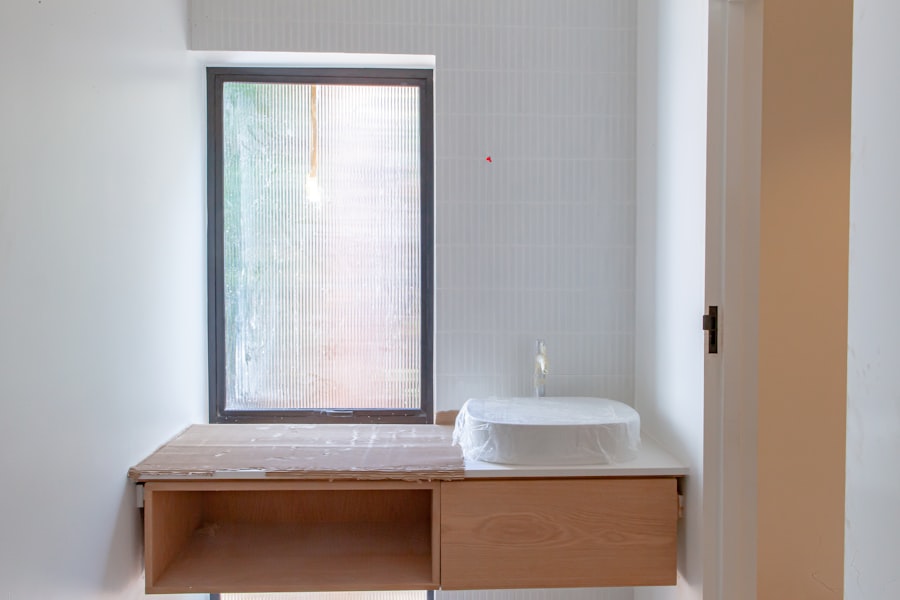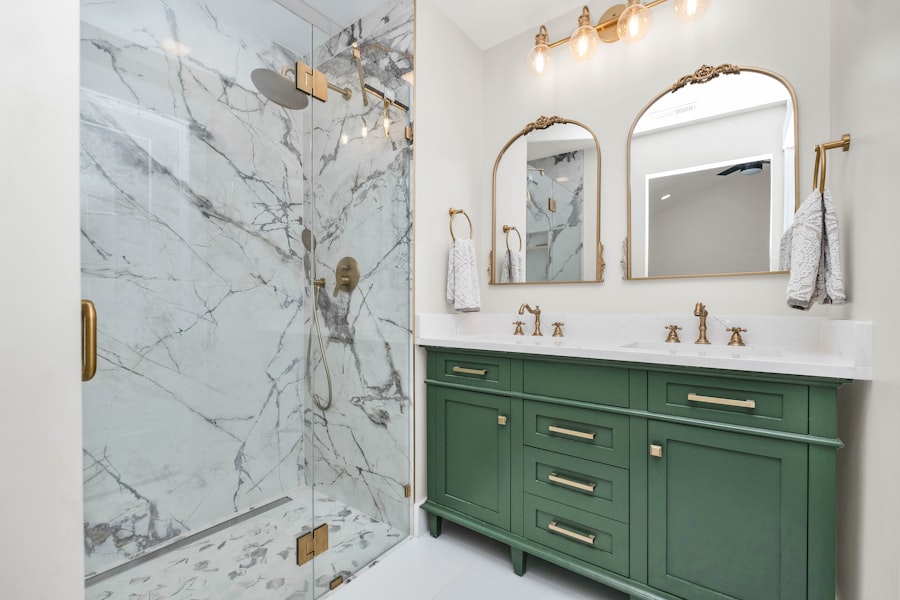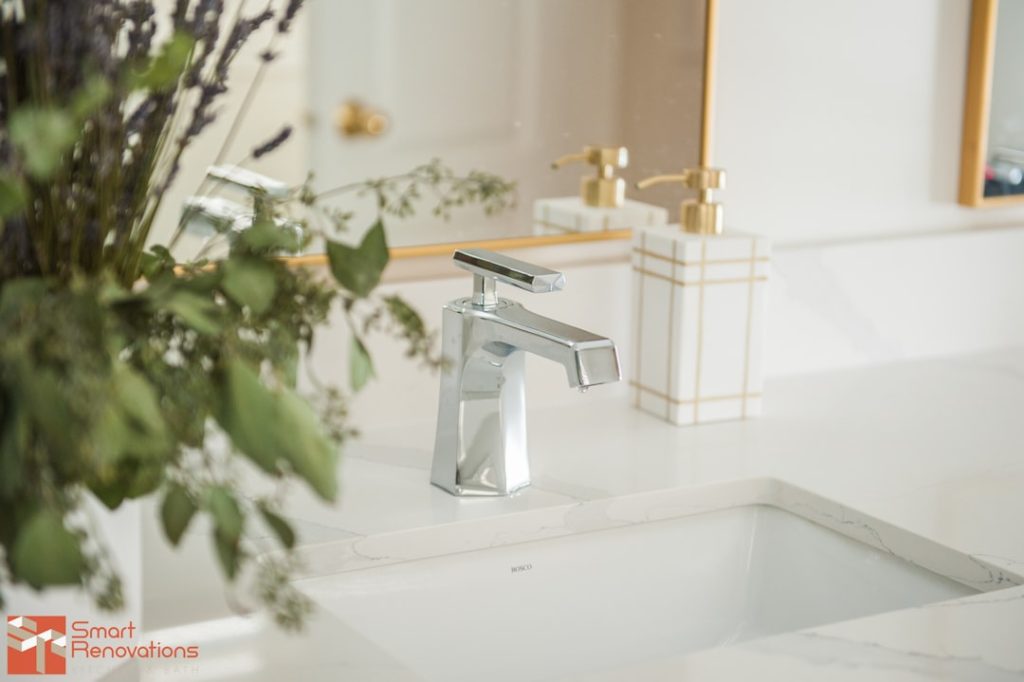Remodeling your bathroom can significantly enhance both the functionality and aesthetic appeal of your home. This often-overlooked space is not just a place for personal hygiene; it serves as a sanctuary for relaxation and rejuvenation. A well-designed bathroom can elevate your daily routine, transforming mundane tasks into moments of tranquility.
Moreover, a bathroom remodel can increase the overall value of your property, making it a wise investment. According to the National Association of Realtors, a bathroom remodel can yield a return on investment of up to 70%, making it one of the most lucrative home improvement projects. Additionally, remodeling your bathroom allows you to address any existing issues that may have been plaguing the space.
Whether it’s outdated plumbing, insufficient storage, or poor lighting, a remodel provides an opportunity to rectify these problems. For instance, if you have a small bathroom that feels cramped and cluttered, a remodel can introduce smart storage solutions and optimize the layout to create a more open and inviting atmosphere. Furthermore, modernizing fixtures and finishes can improve energy efficiency, leading to lower utility bills and a reduced environmental footprint.
Key Takeaways
- Remodeling your bathroom locally offers convenience and personalized service.
- Hiring experienced professionals ensures quality and smooth project execution.
- Proper budgeting helps manage costs and avoid unexpected expenses.
- Selecting the right design and materials enhances both aesthetics and durability.
- Incorporating eco-friendly features boosts energy efficiency and sustainability.
Finding the Right Professionals for Your Bathroom Remodel
Choosing the right professionals for your bathroom remodel is crucial to ensuring that the project runs smoothly and meets your expectations. Start by researching local contractors who specialize in bathroom renovations. Look for professionals with a solid reputation, positive reviews, and a portfolio showcasing their previous work.
Websites like Houzz and Angie’s List can be invaluable resources for finding qualified contractors in your area. Additionally, seeking recommendations from friends or family who have recently completed similar projects can provide insights into reliable professionals. Once you have a shortlist of potential contractors, it’s essential to conduct interviews to gauge their expertise and compatibility with your vision.
Ask about their experience with bathroom remodels, their approach to project management, and how they handle challenges that may arise during the renovation process. Requesting references from past clients can also provide valuable information about their work ethic and reliability. It’s advisable to obtain multiple quotes to compare pricing and services offered, ensuring you find a contractor who aligns with your budget and expectations.
Budgeting for Your Bathroom Remodel Near Me

Establishing a realistic budget is one of the most critical steps in planning your bathroom remodel. Begin by determining how much you are willing to spend and what aspects of the remodel are most important to you. A typical bathroom remodel can range from $5,000 for a basic update to $25,000 or more for a high-end renovation.
Factors influencing the cost include the size of the bathroom, the quality of materials chosen, and whether you are making structural changes or simply updating fixtures. To create an effective budget, break down the costs into categories such as labor, materials, permits, and unexpected expenses. It’s wise to allocate an additional 10-20% of your budget for unforeseen issues that may arise during the renovation process.
For example, if you discover water damage behind the walls or outdated electrical wiring that needs to be updated, having a financial cushion will help you address these problems without derailing your project. Additionally, consider financing options if necessary; many contractors offer payment plans or financing through third-party lenders.
Choosing the Right Design and Layout for Your Bathroom
| Design/Layout Aspect | Considerations | Recommended Metrics | Impact on Bathroom |
|---|---|---|---|
| Space Utilization | Measure available square footage, consider storage needs | Minimum 30 sq ft for small bathrooms; 50+ sq ft for master baths | Maximizes functionality and comfort |
| Lighting | Natural vs artificial, placement of fixtures | 50-75 lumens per sq ft for general lighting; 70-100 lumens for task lighting | Enhances visibility and ambiance |
| Ventilation | Type of exhaust fan, window placement | Minimum 1 CFM (cubic feet per minute) per sq ft of bathroom area | Prevents mold and moisture buildup |
| Fixture Placement | Distance between sink, toilet, shower/tub | At least 15 inches from center of toilet to any side; 21 inches in front clearance | Ensures ease of use and accessibility |
| Storage Solutions | Cabinets, shelves, niches | At least 20-30% of bathroom space dedicated to storage | Keeps bathroom organized and clutter-free |
| Flooring Material | Slip resistance, water resistance | Coefficient of friction (COF) > 0.6 for slip resistance | Improves safety and durability |
| Color Scheme | Light vs dark colors, contrast | Use lighter colors to make small spaces appear larger | Influences mood and perceived space |
The design and layout of your bathroom play a pivotal role in its functionality and overall appeal. When selecting a design style, consider how it complements the rest of your home. Popular styles include modern, traditional, farmhouse, and minimalist designs.
Each style has its unique characteristics; for instance, modern bathrooms often feature sleek lines and bold colors, while traditional designs may incorporate ornate fixtures and classic tile patterns. In terms of layout, think about how you use the space daily. If you share the bathroom with family members, consider incorporating dual sinks or separate areas for showering and grooming to minimize congestion during busy mornings.
If space is limited, explore options like corner sinks or wall-mounted vanities that maximize floor space while providing essential storage. Additionally, consider accessibility features if you plan to age in place or accommodate guests with mobility challenges; this could include wider doorways, grab bars, or curbless showers.
Selecting the Best Materials for Your Bathroom Remodel
The materials you choose for your bathroom remodel can significantly impact both its durability and aesthetic appeal. When selecting materials, prioritize quality and functionality alongside style. For flooring, options like porcelain tile or luxury vinyl plank are popular due to their water resistance and ease of maintenance.
Porcelain tiles come in various designs that mimic natural stone or wood, providing versatility in aesthetics while ensuring longevity. Countertops are another critical element where material choice matters greatly. Quartz is an excellent option due to its non-porous nature and resistance to stains and scratches.
Alternatively, natural stone such as granite or marble offers timeless beauty but requires more maintenance to prevent staining and etching. When it comes to cabinetry, solid wood is often preferred for its durability and classic look; however, engineered wood or laminate can provide cost-effective alternatives without sacrificing style.
Maximizing Space and Functionality in Your Bathroom

Maximizing space in a bathroom is essential, especially in smaller homes where every square foot counts. One effective strategy is to utilize vertical space by installing shelves or cabinets that reach up to the ceiling. This not only provides additional storage but also draws the eye upward, creating an illusion of height in the room.
Floating vanities are another excellent choice; they free up floor space while offering a modern aesthetic. Incorporating multifunctional fixtures can also enhance both space and functionality. For example, consider installing a shower-tub combo if you have limited space; this allows for both bathing and showering without requiring separate fixtures.
Additionally, built-in niches in shower walls can serve as stylish storage for toiletries while keeping surfaces clutter-free. Mirrors can also play a significant role in maximizing space; large mirrors reflect light and create an illusion of depth, making even small bathrooms feel more expansive.
Incorporating Energy-Efficient and Eco-Friendly Features in Your Bathroom
As sustainability becomes increasingly important in home design, incorporating energy-efficient and eco-friendly features into your bathroom remodel is both responsible and beneficial for long-term savings. Start by selecting water-saving fixtures such as low-flow toilets and faucets that reduce water consumption without sacrificing performance. For instance, modern dual-flush toilets allow users to choose between two flush options based on their needs, significantly reducing water usage.
Lighting is another area where energy efficiency can be improved. Opt for LED lighting fixtures that consume less energy and have a longer lifespan compared to traditional incandescent bulbs. Additionally, consider installing dimmer switches to adjust lighting levels based on time of day or activity, further enhancing energy savings.
If possible, incorporate natural light through windows or skylights; this not only reduces reliance on artificial lighting but also creates a more inviting atmosphere.
Adding the Final Touches to Your Remodeled Bathroom
The final touches in your remodeled bathroom are what truly bring the space together and reflect your personal style. Start by selecting accessories that complement your chosen design theme; this could include decorative towels, artwork, or plants that add color and texture to the room. Consider incorporating elements like stylish soap dispensers or unique storage solutions that enhance both functionality and aesthetics.
Don’t overlook the importance of hardware choices as well; cabinet knobs and drawer pulls can significantly impact the overall look of your bathroom. Opt for finishes that align with your design vision—brushed nickel or matte black hardware can add a contemporary touch, while antique brass may evoke a more traditional feel. Finally, ensure that all elements work harmoniously together; from color palettes to textures—cohesiveness will elevate your remodeled bathroom from merely functional to truly exceptional.




